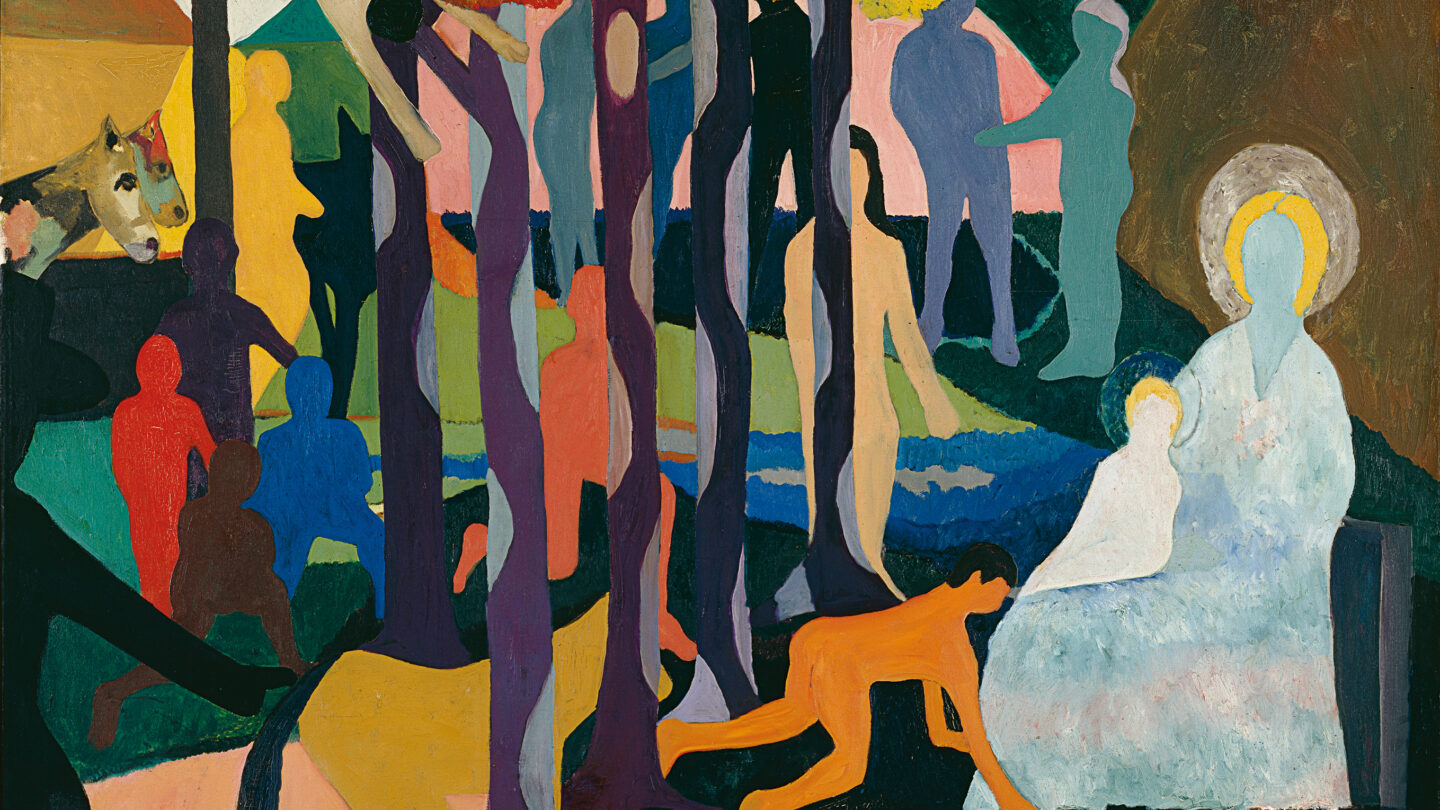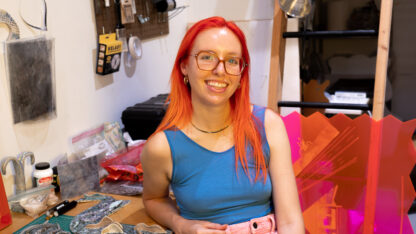African American figurative painter Bob Thompson produced over a thousand paintings in his short life. He died just shy of his twenty-ninth birthday in 1966. Thompson was known for his bold and colorful artwork of silhouettes, influenced by old European masters and the jazz-influenced abstract expressionist movement. His work is currently on view at the High Museum in the exhibition “Bob Thompson: This House is Mine.”
Michael Rooks, the High’s modern and contemporary art curator, joined “City Lights” producer Summer Evans to discuss Bob Thompson’s life and art.
Interview highlights follow below.
The sentiment behind the title piece “This House is Mine:”
“It’s a relatively small, modest painting. The title is evocative. I mean, it suggests that Thompson as a young artist, a young, ambitious painter, is hoping to aiming at appropriating not only his art historical forebears but making a claim, staking a claim in the art world, making space for himself in the art world at that time in the late 1950s and ’60s.”
“There is a wonderful quote in Thelma Golden’s catalog for her exhibition at the Whitney from 1998, from Ralph Ellison, that essentially says that as a Black artist in the ’50s, that everything is kind of up for grabs for appropriation, but also not only to appropriate and possess it but to recreate it through the lens of your own experience as a Black artist,” Rooks said. “That’s something that I think was important to Thompson, obviously, given the content of a lot of the paintings. But what was first and foremost for him, I believe, was this canon of traditional painting that he fell in love with.”
A body of work inseparable from the jazz community around it:
“He, in fact, was a musician. He played the drums. We have a self-portrait of him at a set of bongos, for example,” said Rooks. “Of course, the art scene in New York, the Black art scene in New York, was jazz, and that’s where a lot of the painters, the postwar abstract painters, hung out – in jazz clubs. So he met people like Alex Katz and De Kooning, and you name it, a host of canonical 20th-century abstract painters and figurative painters at the same time. He met Don Cherry, Orette Coleman, Charlie Hayden, all these amazing jazz musicians and composers who are canonical in and of themselves in terms of the history of 20th-century jazz.”
“The largest painting in the exhibition has to do with the music scene in New York. It’s called ‘The Garden of Music.’ It’s from 1960, and it features musicians I mentioned earlier – Charlie Hayden, Don Cherry, others – and it’s this kind of bucolic image of musicians playing in the nude, surrounded by other nude figures in a landscape, kind of a bucolic, paradisiacal landscape to suggest a kind of paradise or utopia that perhaps the artist was expressing through his affiliation and association with these great artists.”
On Thompson’s art in the context of his then-illegal interracial marriage:
“How could an artist, a Black artist at that time, not bring into his work his feelings and thoughts about this kind of existential threat, right? Especially an artist who is marrying a white woman in 1960?” Rooks reflected. “‘Black monster’ …features this, literally this monstrous, monstrous figure in the upper left portion of the canvas entering the scene with his fangs showing, attacking, or pouncing on a white woman. And I think that while you can make references to other sort of art historical subjects that are mythological in this sense, how can you not talk about the fact that the issue of interracial sex or marriage was historically a pretext for racial terrorism at that time, and still is?”
“Bob Thompson: This House is Mine” is on view at the High Museum of Art through Sept. 11. Tickets and more information are available at https://high.org/exhibition/bob-thompson-this-house-is-mine/.









